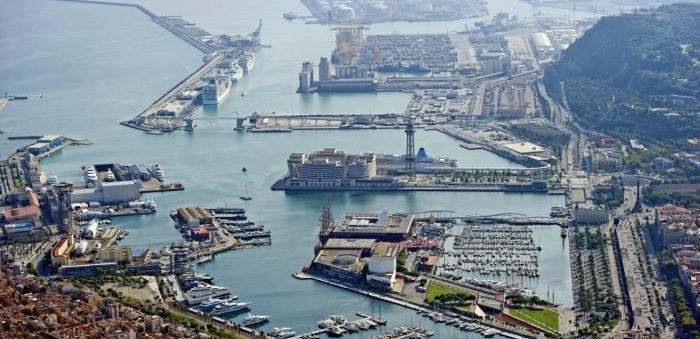The Port of Barcelona will invest €110 million in its Nexigen project to decarbonise port activity and improve air quality. €90 million of these funds correspond to the investments that will be made in onshore power supply systems to connect ships to the general electricity grid while they are berthed.
The additional €20 million are needed to roll out the network that includes the Port Substation, the high-voltage connection to Red Eléctrica’s Ronda Litoral Substation and roll-out of the medium voltage network throughout the port precinct.
The objective is for the Port of Barcelona to have electrified all the cruise berths, the Prat wharf, and the ferry terminals of the Sant Bertran dock and the Costa wharf by 2030, removing 66,000 tonnes of CO2 and 1,234 tonnes of NOx from port activity emissions.
This means “cutting by 38% the tonnes of NOx and CO2 emitted by ships during their stay at the wharf and eliminating 22% of NOx and CO2 emissions from all port activity,” said Port of Barcelona president Damià Calvet.
In the long term, the electrification of the docks of the Port of Barcelona will be a key element in achieving the goal of becoming a climate-neutral port by 2050.
240 kilometres of cable will be laid, and 20.5 kilometres of ducts will extend to the terminals. The Port of Barcelona plans “to make the first electrical connections of ships to the BEST container terminal and the Barcelona Ferry Terminal between the end of 2023 and the beginning of 2024”, according to Port of Barcelona Energy Transition Manager Ana Arévalo.
The next steps will involve processing the application for access and connection of a position for a large consumer in Red Eléctrica’s Ronda Litoral Substation, once the planning of the electricity transmission network for the period 2021-2026 has been published and putting the pilot project on the Ferry Terminal out to tender during the month of April.
The connection to the Ronda Litoral Substation will make it possible to roll out a smart flexible medium-voltage network that will distribute electricity from renewable sources to the various wharves. Then the OPS will be installed on each wharf with the necessary connection management system for each type of ship.
The project aims to achieve technical and legal harmonisation at European level to allow standardisation of electrical supply processes to ships. On the other hand, the PIONEERS project, comprising 46 partners, aims to develop concrete solutions to reduce greenhouse gas emissions in ports while maintaining their competitive edge.
This project has received a €25 million grant from the European Horizon 2020 programme.

































































